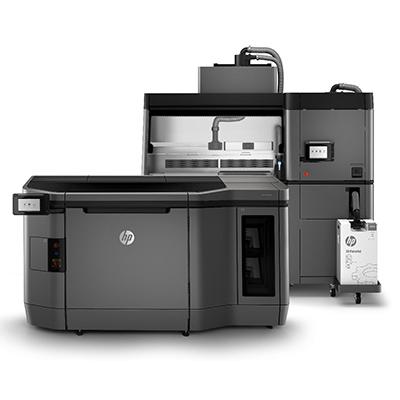5 Things Partners Should Know From HP's Sustainable Impact Report

Reaching Environmental Goals
HP Inc. doesn't consider sustainability tangential to corporate goals -- it's actually at the heart of the company's continued reinvention efforts, according to Nate Hurst (pictured), chief sustainability and social impact officer at HP. On Tuesday, the Palo Alto, Calif.-based maker of PCs and printers released its 2017 Sustainable Impact Report to highlight its progress toward limiting environmental impacts and climate change. Significantly, the report shows that a growing number of customers are requiring HP and its channel partners to include sustainability measures as a component in deals, Hurst said. "Sustainable impact can be a big differentiator between our product portfolio and others," Hurst said in an interview with CRN. "I think the important thing to know about HP is that we look at [sustainability] comprehensively -- we're looking at these issues across supply chain, our own operations and our products and solutions."
What follows are five key things that partners should know from HP's 2017 Sustainable Impact Report.

Deals That Require Sustainability Are Surging
HP reports that inclusion of sustainability measures is rapidly becoming a business imperative, both for the company itself and for channel partners. The 2017 Sustainable Impact Report found a significant increase in deals where sustainability requirements were a "key differentiator" in winning the business, HP said. Such deals rose by 38 percent in 2017 from the year before, resulting in new business totaling $700 million, HP said. Those figures include both direct deals closed by HP and indirect deals by channel partners, Hurst said. "What we've seen is that as the [HP] business continues to reinvent itself, you really need to innovate with the sustainability impact in mind. And you need to help customers do the same, and help them solve the environmental and societal challenges that they're facing," he said. "We believe our technology can be a key enabler to help them scale those results."
Greenhouse Gas Reductions Are Ahead Of Schedule
HP had previously set a goal of reducing the greenhouse gas emissions related to its product portfolio by 25 percent as of 2020 (compared to 2010 emissions). But in 2017, the company achieved a reduction in those emissions of 33 percent. "If you look at HP's environmental footprint, the largest chunk of our footprint is in our product portfolio," making this a significant reduction in emissions, Hurst said. HP also decreased emissions from its operations by 35 percent from 2015 figures, surpassing the previous goal of a 25-percent reduction by 2025. Those reductions came through energy efficiency initiatives as well as use of renewable energy and purchases of renewable energy certificates, HP said.
New Initiatives In Using Recycled Materials
Of the 18,000 tons of recycled plastic that HP used in its products in 2017, more than 170 tons came from plastic in Haiti that otherwise would've likely ended up in the ocean, HP said. That plastic -- equaling more than 8.3 million plastic bottles -- was recycled to create HP printer ink cartridges. "We don't have to source plastic from Haiti, but we recognize that there's a big oceans' plastic problem in the world, and we're trying to find a real business solution to that," Hurst said.
Product Repairability Has Been A Major Focus
Another essential part of HP's sustainability strategy is in "designing products to last," Hurst said. In 2017, HP said that its remanufacturing program repaired 4.6 million hardware units, while the company has set up programs for reuse and recycling of products as well. HP has recycled more than 271,000 tons of hardware since the start of 2016, and aims to recycle 1.2 million tons as of 2015, according to the report. "We are trying to keep the products in the stream in the circular economy for as long as possible, and that ultimately helps protect the planet in the long run," Hurst said.

Sustainability Is At The Core Of Future Innovations
In terms of product focus areas in the future, 3-D printing is one of the biggest initiatives for HP -- in particular though the company's Multi Jet Fusion printers for producing final production parts. While the business is still nascent, HP is already finding ways to drive sustainability goals using the Multi Jet Fusion, Hurst said. One example so far is the use of the 3-D printer to produce a crucial part used in an HP latex printer out of nylon rather than aluminum. The 3-D print approach has reduced related manufacturing emissions by 95 percent, while also cutting costs by 50 percent, HP said. This example is representative of "the mindset we're taking in the 3-D print business," Hurst said. "We're actively driving a more sustainable fourth industrial revolution."